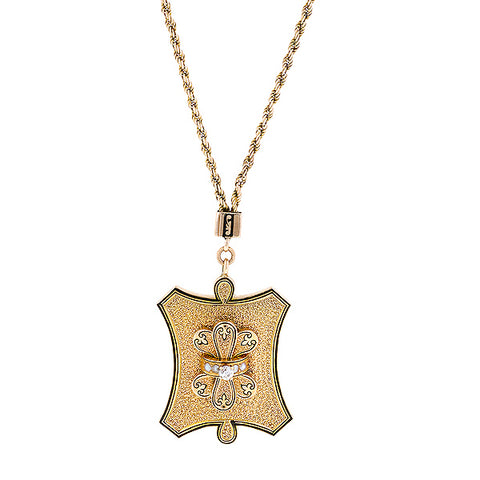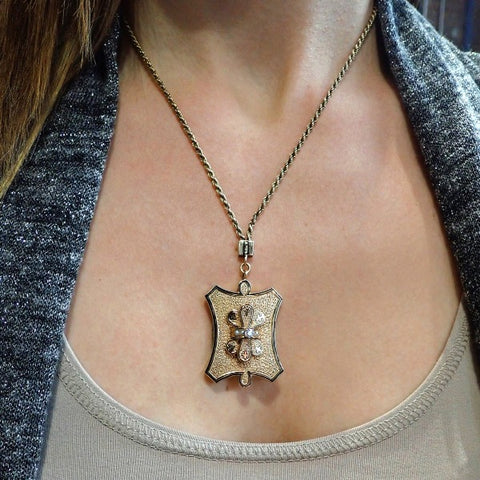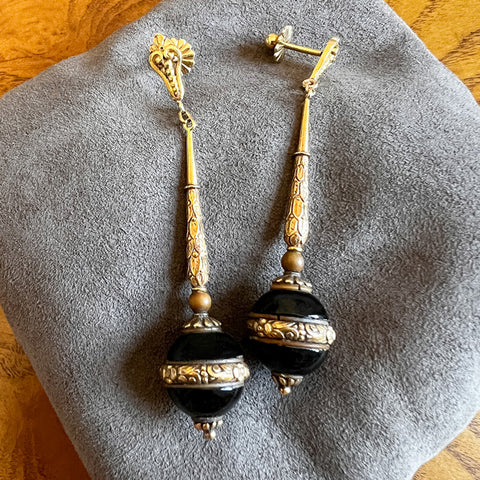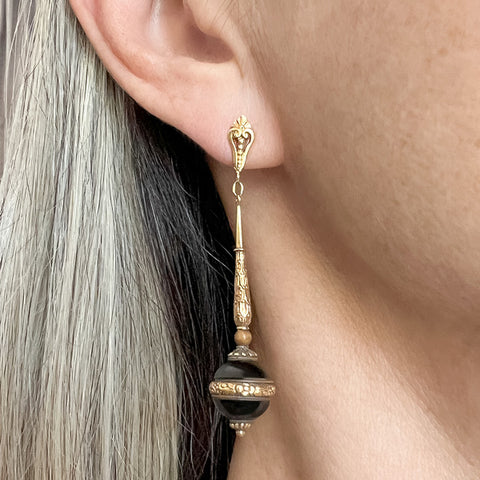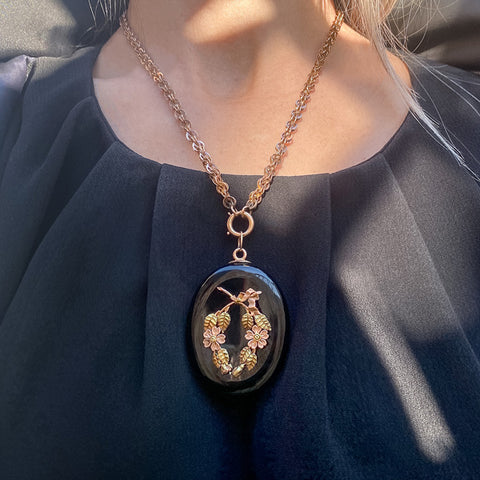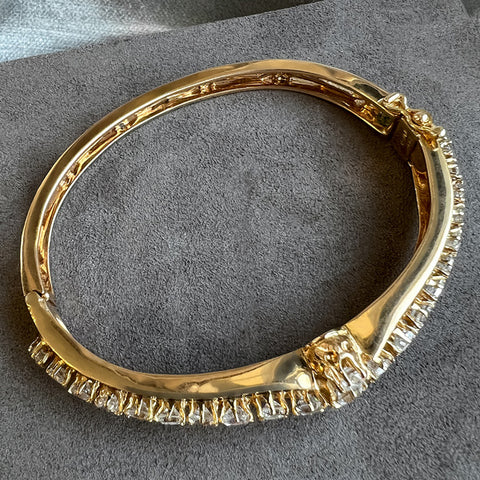Categories
Categories
Autumn's shadows are lengthening. Halloween is here! It seems only fitting to write about Memento Mori Jewelry and Victorian Mourning Jewelry. This is jewelry that reminds us of the ephemeral nature of life.
The Development Of Mourning & Memento Mori Jewelry
Picture a gleaming gold ring adorned with a perfectly carved ivory skull. This was a classic motif in memento mori jewelry, where death wasn't just acknowledged – it was worn as a fashion statement. Dating back to medieval times, these remarkable pieces served as constant reminders of mortality and the fleeting nature of earthly pleasures.

The earliest memento mori rings from the 15th century featured simple skull motifs, but by the 17th century, they had evolved into elaborate works of art. Rings with miniature coffins that opened to reveal tiny skeletons, or pendants depicting souls in purgatory crafted in exquisite enamel work. Some pieces depicted intricate scenes of the Dance of Death, or Le Danse Macabre. Skeletons cavorted with figures from all walks of life – a reminder that death comes for everyone, from paupers to kings.

Perhaps most fascinating were the transformation rings – pieces that appeared as one thing at first glance but concealed hidden memento mori symbolism. A beautiful flower might flip to reveal a skull, or a gemstone might lift to expose a coffin beneath. These pieces were jewelry as well as mechanical marvels that transformed in the wearer's hands.

The Victorian Obsession: When Fashion Guided the Grieving Process
The Victorian era took mourning jewelry to unprecedented heights, creating a language of grief expressed through personal adornment and symbolism. After Prince Albert's 1861 death, England's Queen Victoria's descent into deep mourning created an entire mourning jewelry industry that lasted for decades. This industry evolved due to strict social norms that dictated what was worn during the grieving period.

The Stages of Victorian Mourning Jewelry
Victorian mourning jewelry followed strict social codes that reflected the stages of grief:
Deep Mourning (First Year):- Only jet jewelry was permitted
- Black enamel for those who died married
- White enamel worn for the passing of children and unmarried persons
- Pearls to represent tears
- No shiny surfaces or diamonds

Second Mourning (Next Nine Months):
- Introduction of matte gold
- Amethysts and deep garnets permitted
- Hair jewelry is acceptable

Half Mourning (Final Six Months):
- Addition of purple and grey materials
- Return to diamonds and other precious stones
- Symbolic motifs like forget-me-not flowers and willow trees

Victorian mourning jewelry was rich with symbolism. Each motif carried specific meaning:
- Anchor: Hope
- Broken Column: Life cut short
- Ivy: Eternal friendship and fidelity
- Willow: Perpetual mourning
- Forget-me-not flowers: True love and remembrance
- Empty chairs: Loss and absence
- Hours/clocks: Time's passage and life's brevity

Many pieces also contained secret compartments, housing everything from miniature portraits to dried flowers from funeral bouquets. Some even had specialized mechanisms that would release drops of perfume when worn, often scented with the deceased's favorite fragrance.


Victorian Hair Jewelry: When Hair Became the Jewel
Victorian hair jewelry deserves special mention for its incredible craftsmanship as well as its personal-intimate nature. Professional hair workers would weave strands of a deceased loved one's hair into intricate patterns that could rival the finest lacework. These pieces took many forms:
- Braided hair bracelets with gold clasps
- Watch chains made entirely of human hair
- Mourning brooches with hair arranged in delicate flowers
- Rings with compartments containing coiled locks of hair
- Wall hangings combining hair from multiple family members
Some pieces were so complex they contained hair from multiple generations, creating literal family trees worn as jewelry. Workshops in Victorian London specialized in creating these pieces, with some craftsmen able to weave hair so finely it resembled delicate threads of silk.

Tips for Collecting Eerie Antique Jewelry
If you're interested in starting your own collection of haunted or historical mourning jewelry:
- Research the hallmarks of different eras. Georgian and Victorian mourning jewelry have distinct characteristics.
- Look for pieces with provenance. A documented history adds value and intrigue to the jewelry. Many mourning pieces are engraved or enameled with the deceased name and year.
- Learn to identify authentic materials, including jet, onyx, and human hair
- Always handle antique pieces with care. They may contain delicate materials or hidden compartments
- Consider the story behind each piece. Sometimes the history is more valuable than the materials

A Word of Remembrance
Whether you love it or feel it's slightly creepy, Memento Mori, Victorian Mourning Jewelry or Hair Jewelry were created as expressions of love and grief. They serve as tangible reminders of our ancestors' relationships with death, mourning, and remembrance.
As you prepare for Halloween, or all Hallow's Eve, add a piece of historical jewelry to your costume. It’s a way to remember and honor the past and the people who have come before us.
Want to learn more? Read about a mourning jewelry event we hosted a few years ago that included Georgian, Victorian, and even modern memento mori and mourning jewelry.








